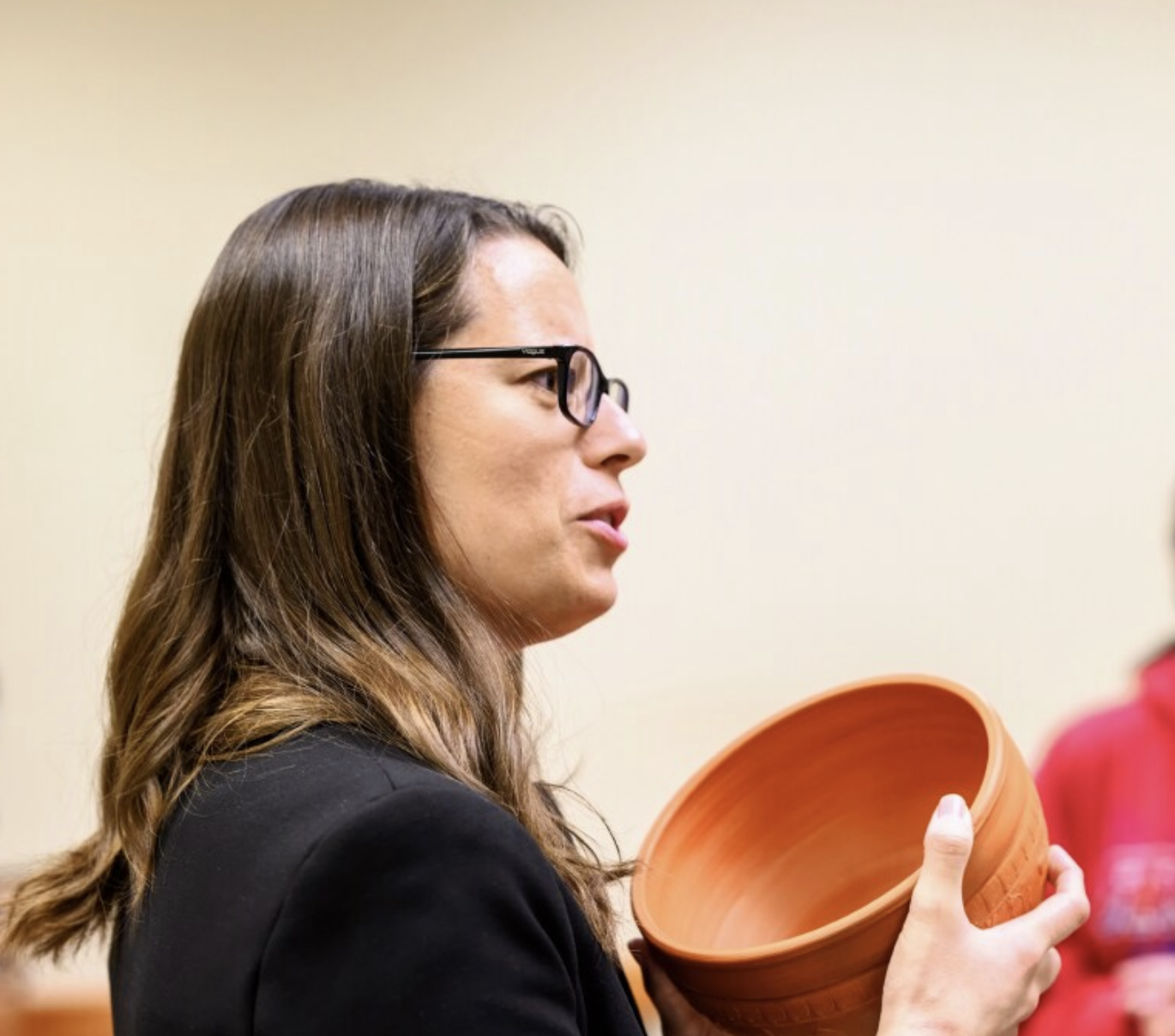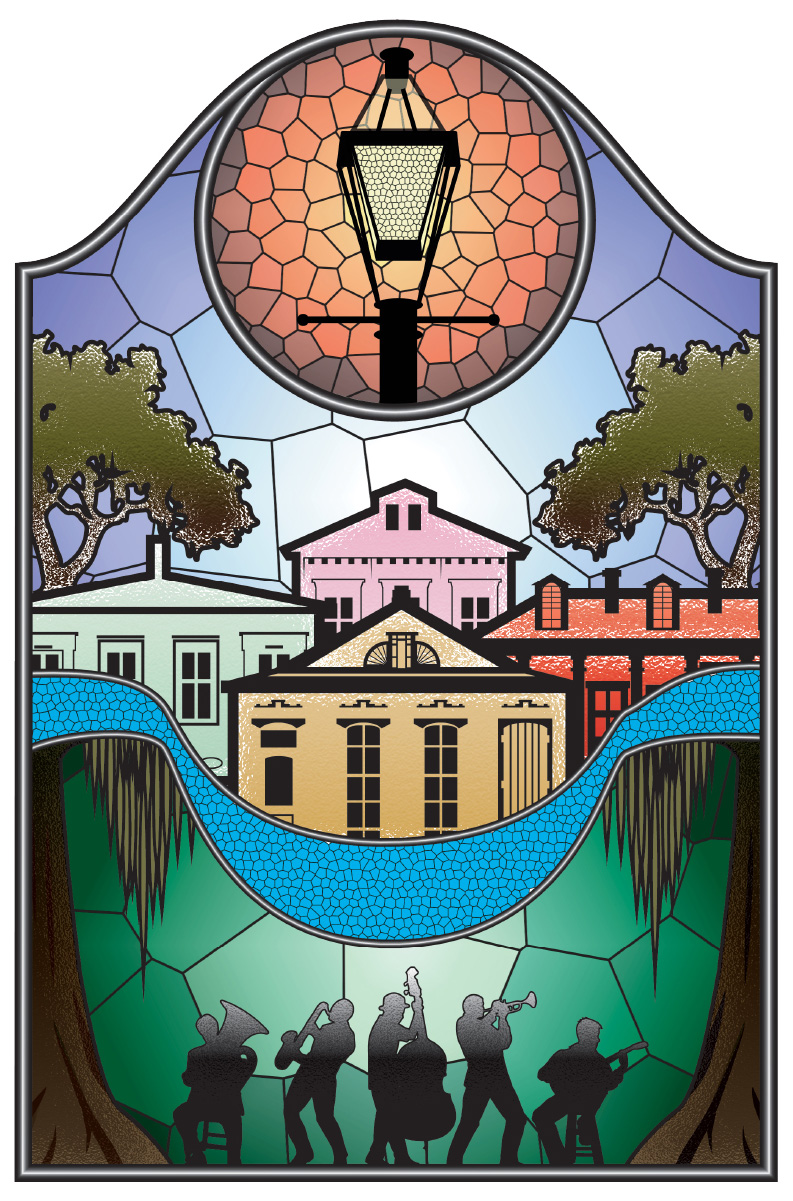Robyn Le Blanc Receives ANS Chairman’s Fellowship to Study Roman Ceramic Banks
The ANS instituted the Chairman’s Fellowship for Numismatic Research in 2023 to support “qualified graduate students or scholars pursuing serious numismatic research projects that are expected to result in academic publication.” The inaugural recipient was Melissa Ludke, for her project on “Cosa and Socio-Economic Interactions among Middle Republican Cities in Central and South Etruria.”

Robyn Le Blanc teaching. Courtesy Martin Kane, UNC Greensboro.
This past October, the selection committee awarded a second fellowship to Robyn Le Blanc, Assistant Professor of Classical Studies at the University of North Carolina at Greensboro, for her study “Reevaluating Decorated Roman Ceramic Banks.” We caught up with Robyn to learn more about her project.
ANS: Robyn, congratulations on this award! This sounds like a unique and very intriguing project. I think some members of the committee were not familiar with the fact that the Romans had decorated savings banks. Can you tell us more about Roman ceramic banks? Did they function similarly to the modern ‘piggy bank’?

Terracotta bank with image of Mercury, Harvard Art Museums 1977.216.3019. © President and Fellows of Harvard College, courtesy Harvard Art Museums.
Robyn: They’re a fascinating group of objects, but we don’t know much about how they were actually used in antiquity. There are around 50-odd banks that I’m familiar with (not all of them decorated), and they seem to have served in a variety of functions—we find undecorated banks in graves, for example, and also in households. Very few examples were found with money inside. The decoration, shape, and how much money they could hold varies, but I’m particularly fond of the ones shaped like beehives and decorated with images of Mercury, the god of merchants, and Fortuna, the goddess of good fortune. Both of these gods actually appear as decoration on a lot of banks; they probably served to protect the coins placed within. Earlier scholars often identified these “piggy banks” as ceramic savings banks for children, but there’s no real reason to do so. More likely, these were special occasion objects, Saturnalia gifts or something like this. It’s not likely that these were used for everyday money storage, because there was only one way to get the coins in and out—a narrow slot at the top. Many of the broken ceramic banks seem to have been smashed in, perhaps to get the coins out of the bank quickly. An interesting example comes from a plain bank where someone has broken the bottom—presumably to remove the coins–and then sealed it back up again with a ceramic plug so that the bank could still be used!
ANS: How will this fellowship advance your work and what are you hoping to learn or discover with this work?
Robyn: The Chairman’s Fellowship will allow me to travel to several museum collections in the United States to view, measure, and study six Roman banks firsthand. This is a really important step for a project like this, where size and scale as indicated by photographs can be really deceptive! The beehive banks, for example, are smaller than they look, and the lenticular banks are larger! Taking measurements is important for understanding, for example, how many coins (and what denominations) could fit into the bank, and also for issues of production. Some of the banks are stamped with the names of the makers, and some of these makers seem to also produce ceramic Roman lamps. Are we looking at a special output from just a few ceramic workshops? These are the kinds of questions that I’m hoping to address before really exploring the function(s) of these banks in greater detail.
ANS: That is really fascinating. We are looking forward to hearing more about the conclusions of your research and getting a better understanding of how these banks were produced and functioned. As a final question, we know you have been a member of the ANS since 2020, why did you decide to join the ANS?

Terracotta money-box with image of a pig inscribed FELIX, Yale University Art Gallery 1913.579. Public domain.
Robyn: I started working with ancient coins for my doctoral dissertation, and I essentially taught myself. While I couldn’t attend the ANS summer session because of summer archaeological fieldwork, the ANS provided an intellectual community through their website, colleagues who were members, and the magazine at a time when I really needed to find that sort of community. So I wanted to make sure that I fully participated in that community as well, and help support the wonderful work that the Society is doing promoting and supporting numismatics.
ANS: It has been a pleasure hearing more about your research, and we are very happy to have you as part of our community. Congratulations again on your fellowship! Please do let us know how your work progresses, and we look forward to your future Long Table on this topic.
Robyn will present her research in more depth at an ANS Long Table, date to be announced. A link will be sent to members the day of the event. Applications for the Chairman’s Fellowship for Numismatic Research are accepted on a rolling basis. Applicants must be ANS members or Fellows in good standing. To apply, please send a CV, proposal (not to exceed 2,500 words), and budget to ans@numismatics.org.




